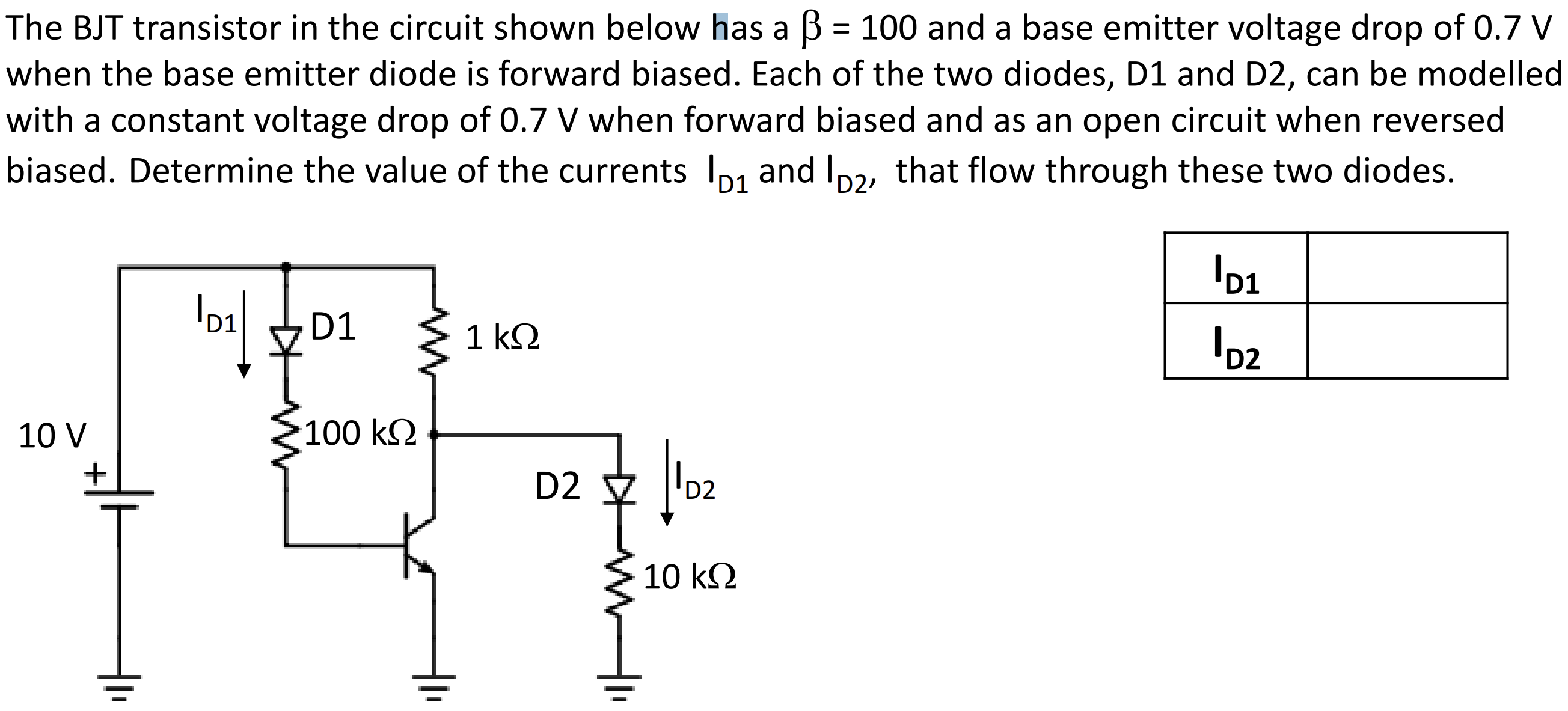The BJT transistor in the circuit shown below has a β = 100 and a base emitter voltage drop of 0.7 V when the base emitter diode is forward biased. Each of the two diodes, D1 and D2, can be modelled with a constant voltage drop of 0.7 V when forward biased and as an open circuit when reversed biased. Determine the value of the currents ID1 and ID2, that flow through these two diodes.



You'll get a detailed, step-by-step and expert verified solution.
 Work With Experts to Reach at Correct Answers
Work With Experts to Reach at Correct Answers